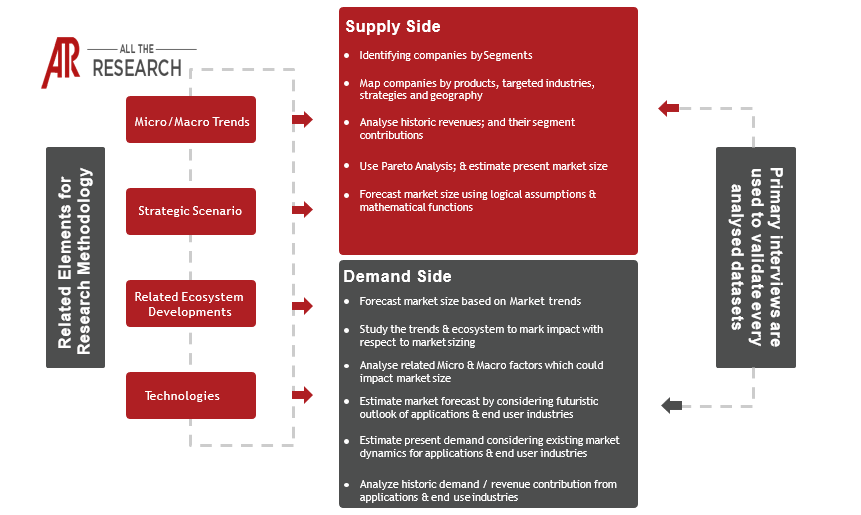Blockchain Interoperability Market: Connecting Siloed Chains for a Decentralized Future
The Blockchain Interoperability Market is poised for significant growth, driven by the increasing demand for seamless communication and data exchange between disparate blockchain networks. This burgeoning market facilitates the transfer of assets, information, and functionality across otherwise isolated blockchain ecosystems, enabling a truly interconnected and decentralized future.
Key Market Drivers:
- Proliferation of Blockchain Networks: The rapid growth in the number of specialized and permissioned blockchain networks has created a fragmented landscape. Each blockchain often operates independently, limiting their collective potential and hindering widespread adoption. Interoperability solutions are crucial for bridging these silos.
- Demand for Cross-Chain Asset Transfer: The ability to move digital assets, such as cryptocurrencies and tokens, between different blockchains is a primary driver. This allows users to leverage the unique functionalities of different blockchains, participate in diverse DeFi ecosystems, and unlock greater liquidity.
- Enhanced Scalability and Efficiency: By enabling the distribution of workloads across multiple blockchains, interoperability solutions can improve overall scalability and efficiency. This alleviates congestion on individual networks and optimizes resource utilization.
- Increased Adoption of Decentralized Applications (dApps): Interoperability empowers dApps to access data and functionalities from multiple blockchains, creating more complex and versatile applications. This fosters innovation and expands the scope of dApps in various industries.
- Rise of Enterprise Blockchain Adoption: Businesses are increasingly adopting blockchain technology for various use cases, but often require interoperability to integrate with existing systems and partner networks using different blockchain protocols.
Key Market Challenges:
- Security Concerns: Ensuring the security and integrity of cross-chain transactions is paramount. Vulnerabilities in interoperability protocols can lead to significant losses and damage the credibility of the technology.
- Complexity and Standardization: Developing interoperability solutions that are secure, efficient, and compatible with a wide range of blockchains is a complex undertaking. The lack of standardized protocols and APIs poses a significant challenge.
- Scalability Limitations: Some interoperability approaches can introduce scalability bottlenecks, particularly when dealing with high transaction volumes. Efficient and scalable solutions are needed to support mainstream adoption.
- Regulatory Uncertainty: The evolving regulatory landscape for blockchain technology adds complexity to interoperability. Compliance with different jurisdictions and regulations is essential for fostering trust and adoption.
- Governance Issues: Establishing robust governance mechanisms for interoperability protocols is crucial for ensuring transparency, accountability, and long-term sustainability.
Key Definitions:
- Blockchain Interoperability: The ability of different blockchain networks to communicate, share data, and transact with each other seamlessly.
- Cross-Chain Transfer: The movement of assets, such as cryptocurrencies or tokens, from one blockchain network to another.
- Atomic Swap: A peer-to-peer exchange of cryptocurrencies between different blockchains without the need for a trusted intermediary.
- Sidechains: Independent blockchains that are connected to a mainchain and allow for the transfer of assets and data.
- Relays: Protocols that enable blockchains to verify and validate transactions occurring on other blockchains.
Regulatory Focus:
Regulators worldwide are closely monitoring the development of blockchain interoperability solutions. Key areas of focus include:
- AML/KYC Compliance: Ensuring that cross-chain transactions comply with anti-money laundering and know-your-customer regulations.
- Consumer Protection: Protecting consumers from potential risks associated with interoperable blockchain services, such as fraud and security breaches.
- Data Privacy: Addressing data privacy concerns related to the exchange of information between different blockchains.
- Tax Implications: Clarifying the tax treatment of cross-chain transactions and digital assets.
Major Players:
The Blockchain Interoperability Market is competitive, with a mix of established companies and innovative startups:
- Cosmos: A decentralized network of independent, parallel blockchains, each powered by Byzantine fault-tolerant consensus algorithms.
- Polkadot: A multi-chain network that allows different blockchains to connect and interoperate.
- Chainlink: A decentralized oracle network that provides secure and reliable data feeds to smart contracts.
- Wanchain: A blockchain interoperability platform that enables cross-chain transfers of assets and data.
- LayerZero: An omnichain interoperability protocol.
Regional Trends:
- North America: Early adoption of blockchain technology and a strong focus on innovation drive the growth of the interoperability market in North America.
- Europe: A supportive regulatory environment and a growing interest in enterprise blockchain applications are fueling the market in Europe.
- Asia Pacific: Rapid economic growth and a large base of cryptocurrency users are contributing to the expansion of the market in Asia Pacific.
- Middle East and Africa: Increasing adoption of blockchain technology in various sectors, such as finance and supply chain management, is driving the growth of the market in the Middle East and Africa.
Trends within M&A, Fund Raising, etc.:
- Increased Venture Capital Funding: The Blockchain Interoperability Market has attracted significant venture capital investment, reflecting the growing interest in its potential.
- Strategic Acquisitions: Large blockchain companies are acquiring smaller interoperability startups to expand their capabilities and market reach.
- Partnerships and Collaborations: Companies are increasingly forming partnerships and collaborations to develop and deploy interoperability solutions.
Projected CAGR%:
The Blockchain Interoperability Market is projected to experience a robust Compound Annual Growth Rate (CAGR) of between X% and Y% over the forecast period (e.g., 2024-2030), driven by the factors mentioned above.
In conclusion, the Blockchain Interoperability Market is poised for significant growth as businesses and individuals seek to unlock the full potential of blockchain technology. As the industry matures and standards emerge, interoperability solutions will become increasingly critical for enabling a truly decentralized and interconnected future.
The Report Segments the market to include:
By Type
- Token Bridges
- Cross-Chain Smart Contracts
- Relay Chains
- Sidechains
- Oracles
By Application
- Decentralized Finance (DeFi)
- Non-Fungible Tokens (NFTs)
- Supply Chain Management
- Healthcare
- Gaming
- Identity Management
- Others (e.g., Voting, Data Sharing)
By End-User
- Enterprises
- Decentralized Application (DApp) Developers
- Cryptocurrency Exchanges
- Financial Institutions
- Government
- Others
By Blockchain Network
- Public Blockchain
- Private Blockchain
- Consortium Blockchain
By Region
- North America
- Europe
- Asia Pacific
- Middle East & Africa
- Latin America
Related Reports




